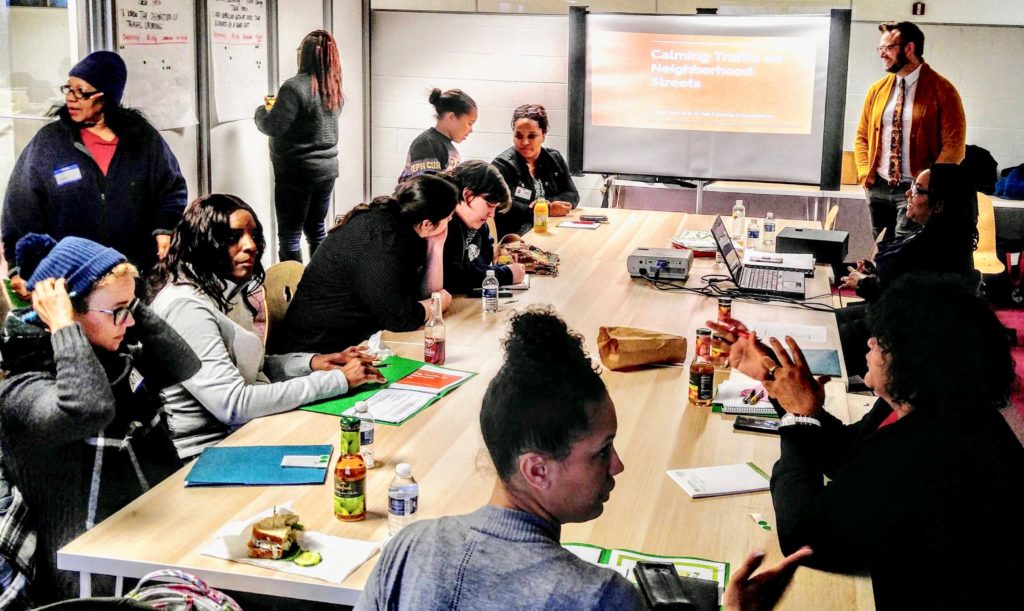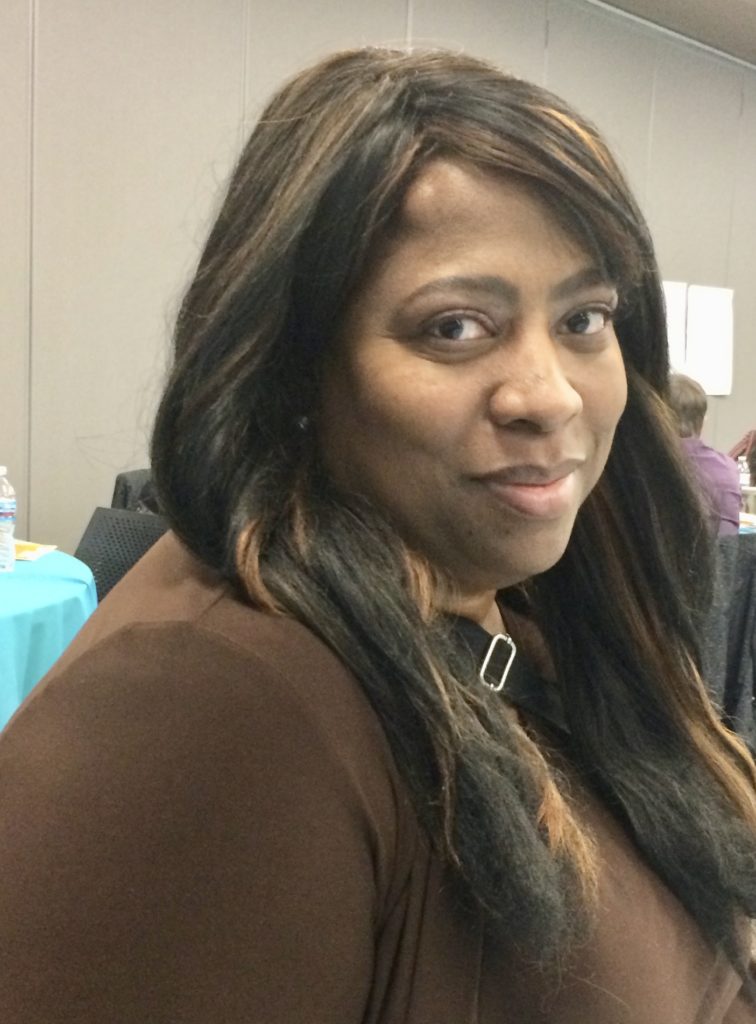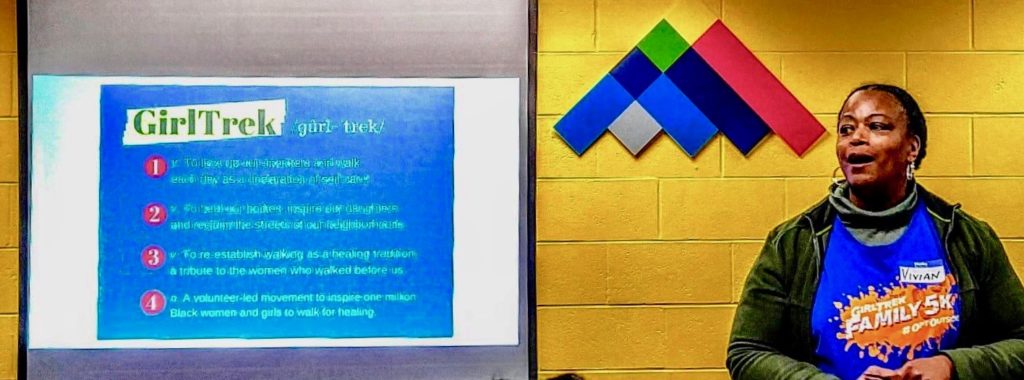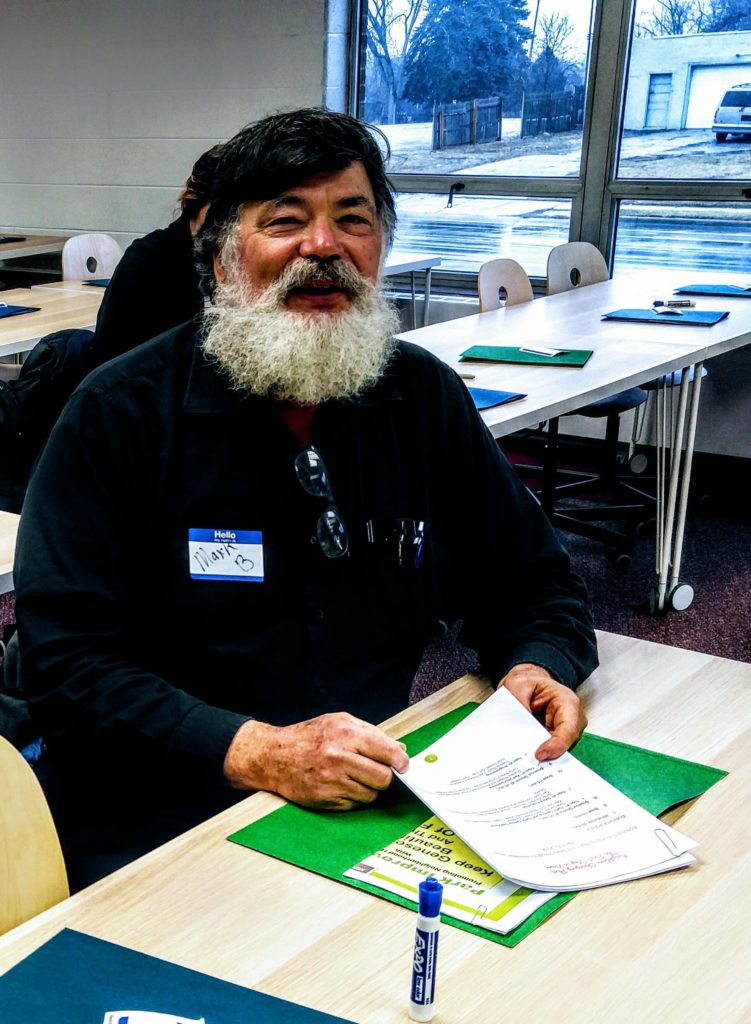By Darlene C. Carey
“It’s our hope that residents that don’t see the dots will be able to connect the dots to their area resources,” said Ashley Everhart, agency director at the Neighborhood Engagement Hub, during the fifth workshop in the “Neighbors Changing Flint” series Wednesday, March 20 at the Sylvester Broome Empowerment Village.
The topic was “Promoting Health and Safety Through Environmental Design,” and topics raised included the Martin Luther King Boulevard “road diet” plan and aspects of the city master plan’s “green” neighborhoods designations.
“We’ve had 30 to 40 people show up on average,” Everhart said, “which has been a great turnout.” The 45 Flint men, women, and children in last week’s meeting participated in two 45-minute break-out sessions focusing on traffic calming, data evaluation, park improvements, and programming.
Before the workshops even began, participants were cautioned about civility in having dialogue. “We understand that there are a lot of issues in the city that we are working to address. Bring an issue to the table, but let’s try to seek solutions and bare ideas, ask questions about how we can make things better,” Everhart said. “Be respectful for those in the room, we’re all people trying to do something to make this a better place to be and be mindful of the people sitting next to you. No side conversations. Let’s build on the ideas of others tonight.”
Residents were asked to hold questions until the end of the presentations, to write their questions down, and wait for the question and answer portion of the presentations centered around whether connections to some dots are being missed.
With only five minutes at the end of each breakout session for questions and comments, however, few residents’ voices were heard, with the exception of side conversations.
It was those side conversations, before the workshop presentations started, that raised more residents’ voices about the health and design of Flint’s infrastructure. A particular point of discussion was the proposed “road diet” for Martin Luther King Boulevard. It was clear not every Flint resident approves of the measures.
A road diet matrix is available at the Master Plan Summary found at this link: https://www.cityofflint.com/wp-content/uploads/Flint%20Master%20Plan%20Summary.pdf
According to U.S. Department of Transportation Federal Highway Administration, road diets are generally described as “removing travel lanes from a roadway and utilizing the space for other uses and travel modes” such as walkers and bikers.

Cade Surface (standing at right) and breakout session participants (Photo by Jeff Carey)
Cade Surface, Crim Fitness Foundation active community coordinator and partner with the Flint Neighborhoods United Traffic Taming Task Force, presented why road diets matter. Surface said, “I’m not anti-car, but I am against us building and maintaining places that are primarily built for cars at the expense of our health, our finances, our independence, our safety, our social connectivity.”
“It’s some bullshit,” said Meshelle Merritt, Flint resident and U.S. Army veteran who specialized in contracting and facilities management. During her service, she studied military engineering, maps, and infrastructure.

Meshelle Merritt (Photo by Jan Worth-Nelson)
She continued, “This is why I can’t be your friendly politician because it’s bullshit. If the population was increasing, oh yeah okay, I could see it, and if it was a live-walk-work community, oh yeah okay, I could entertain it, there’s no legitimate reason in the foreseeable future that would even require a road diet in that area. The population is decreasing and you know, there aren’t any active businesses in that area and beyond so why the road diet?”
Mark Baldwin, who said he was a fourth generation Flint resident and urban farmer currently with four hoop houses, explained the difficulty residents experience with newly proposed development. “The problem is that we haven’t fully implemented that Master Plan, green neighborhoods one and two and most green initiative areas…and we basically have one council member holding that up,” Baldwin said.
Asked to further explain, Baldwin said, “The First Ward [Councilperson Eric Mays]–told me the other day he will not vote for the Master Plan as is. He wants all those houses, all those properties in his ward to be residential. He doesn’t want green innovation, he doesn’t want GN1 or GN2 [designations within the master plan]; he wants it like it has been. We voted for it too. He inferred that the will of the people, per the vote, doesn’t really represent the will of the people.”

Vivian Gayles presents on “GirlTrek.” a movement to get one million Black women and girls to walk for healing. (Photo by Jeff Carey)
The second session featured Theresa Roach, from the Crim Fitness Foundation and Vivian Gayles, who started the Flint community chapter of GirlTrek, a volunteer-led movement to inspire one million Black women and girls to walk for healing.
At the end of the Session One workshop, Surface handed out his business cards for Flint residents to contact him directly and also encouraged residents to contact Renell Weathers, a representative from the Michigan League of Public Policy. His email is: rweathers@mlpp.org. At the end of Session Two, Everhart offered to email residents the Neighborhood Engagement Hub project planning template after one resident asked for it. It’s a start, Everhart said, in connecting the dots.
Asked if events such as these help get their opinions to be heard, Baldwin replied, “I think they’re helpful. They’re getting information about programs that are helpful.”

Mark Baldwin (Photo by Jeff Carey)
Baldwin however added, “It allows me to spew what I think and I found people don’t want to hear that and they just want to go with the flow but what’s happening is that the [Genesee County] Land Bank owns 25 percent of our city and people are continuing to move out.”
[In a February, 2018 forum at the Flint Public Library, Christina Kelly, director of planning and neighborhood revitalization for the Land Bank, said there are about 24,000 vacant properties in the city, and of those, 12,000 are owned by the Land Bank – about 21 percent of the city’s properties.]
The sixth and final free workshop in the “Neighbors Changing Flint” series is 5-8 pm. Wednesday, March 27, on the topic “Advocating for your community and planning for long-term change.” Like all the other sessions, it will be held at the Sylvester Broome Empowerment Village, 4119 N. Saginaw St. Register on the Neighborhood Engagement Hub website at the following link http://www.neighborhoodengagementhub.org/advocating.html
The series is hosted by the Neighborhood Engagement Hub in partnership with the Ruth Mott Foundation, Applewood, Flint Neighborhoods United, the City of Flint, the Crim Fitness Foundation, the Land Bank of Genesee County, and the Community Foundation of Greater Flint.
EVM staff writer Darlene C. Carey can be reached at darcar7@hotmail.com.



You must be logged in to post a comment.